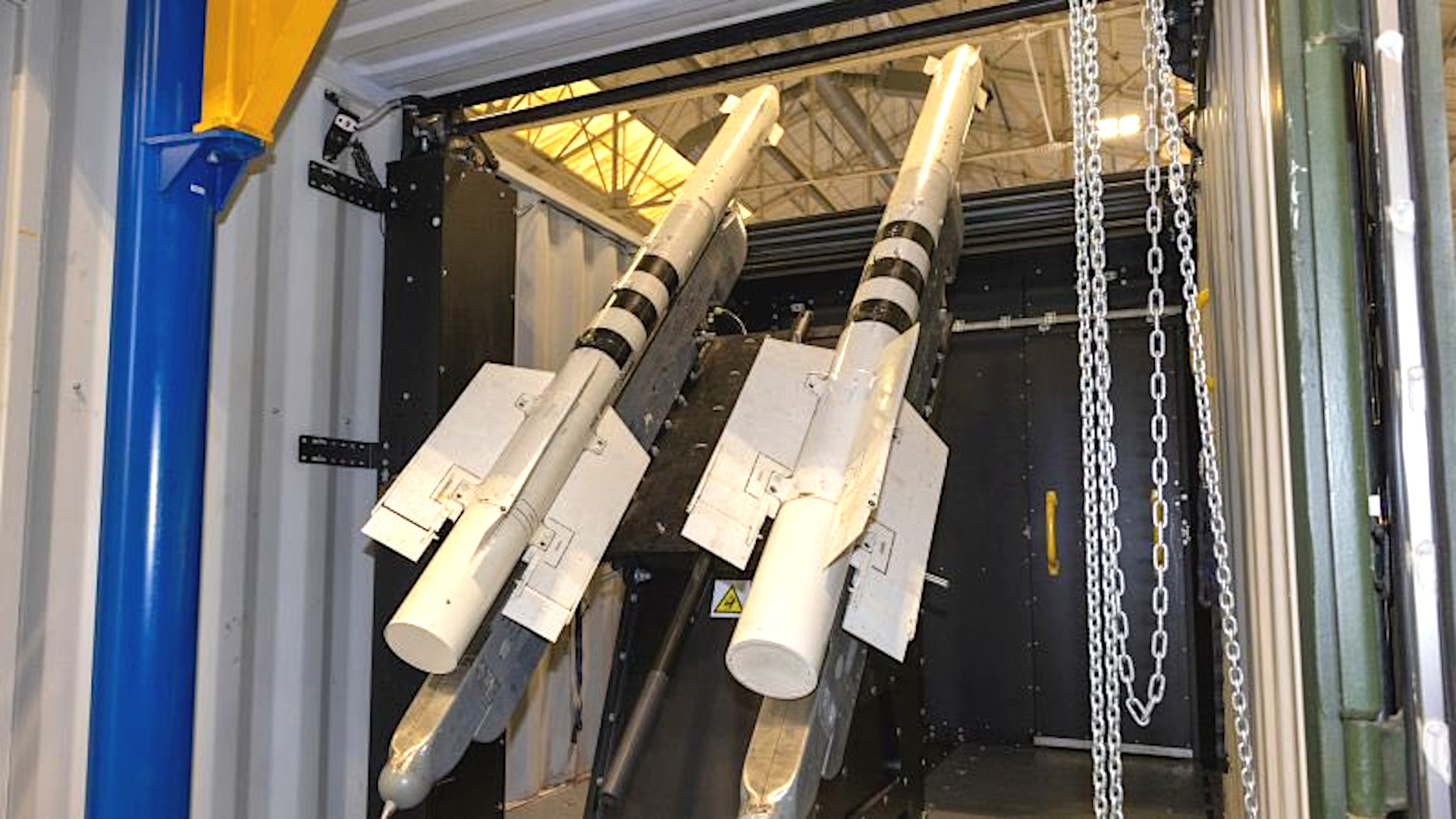We now have our first look at the containerized Gravehawk surface-to-air missile system, which uses repurposed Soviet-era heat-seeking R-73 air-to-air missiles as interceptors, that the United Kingdom and Denmark have developed for Ukraine. Gravehawk is the latest in a series of what have become commonly referred to as ‘FrankenSAMs,’ which leverage existing capabilities within the Ukrainian armed forces’ arsenal to help rapidly provide badly needed additional air defenses.
Forces News in the United Kingdom was first to publish the pictures and video of Gravehawk, and to report on additional details about the system and its development. British authorities first disclosed the existence of the Gravehawk project in January, but provided only limited information and no visuals at that time.
It took a U.K. Ministry of Defense element called Taskforce Kindred and an unspecified group of private contractors approximately 18 months and six million pounds (almost $7.5 million based on the rate of conversion at the time of writing) to develop Gravehawk, according to Forces News. The unit cost is around one million pounds ($1.24 million). The entire system fits inside a modified ISO shipping container with a retractable roof. Two Gravehawks have been delivered to Ukraine to date and have already been used in combat, and the country is set to eventually get 15 more of them.
Forces News‘ report indicates that Gravehawk is intended to be emplaced on the ground before use, and it is unclear if it can be employed while it is still on the back of a truck. An eight-wheeled Leyland DAF truck equipped with the Demountable Rack Offload and Pickup System (DROPS) capable of relatively quickly loading and unloading containers is seen alongside Gravehawk in the imagery that has now been released.
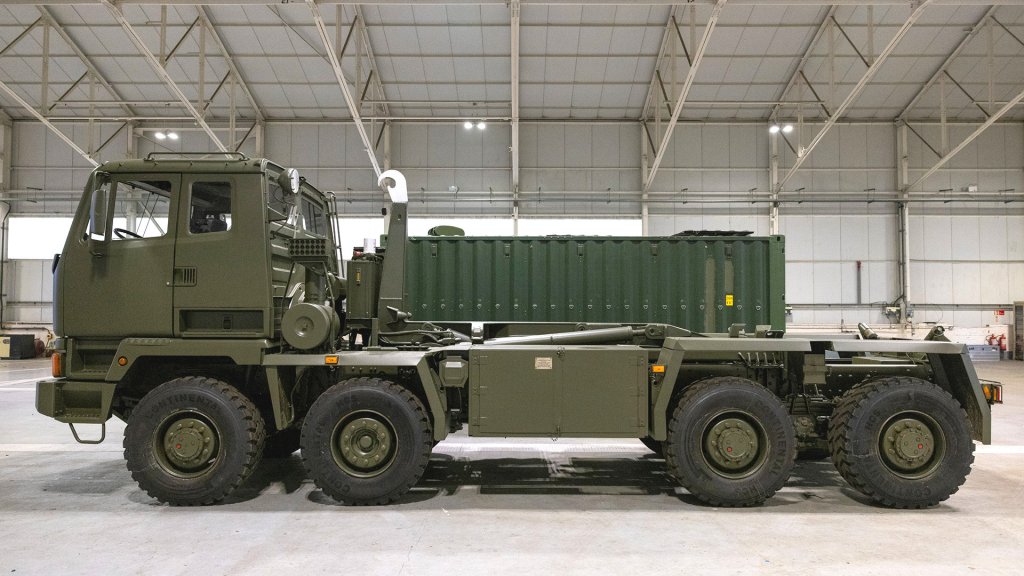
When it comes to targeting, Gravehawk has a retractable sensor system containing at least one infrared camera that is used to spot and track targets, and cue the R-73 missiles to them, per Forces News. The main fire control unit fits inside a Pelican-like case as seen below.
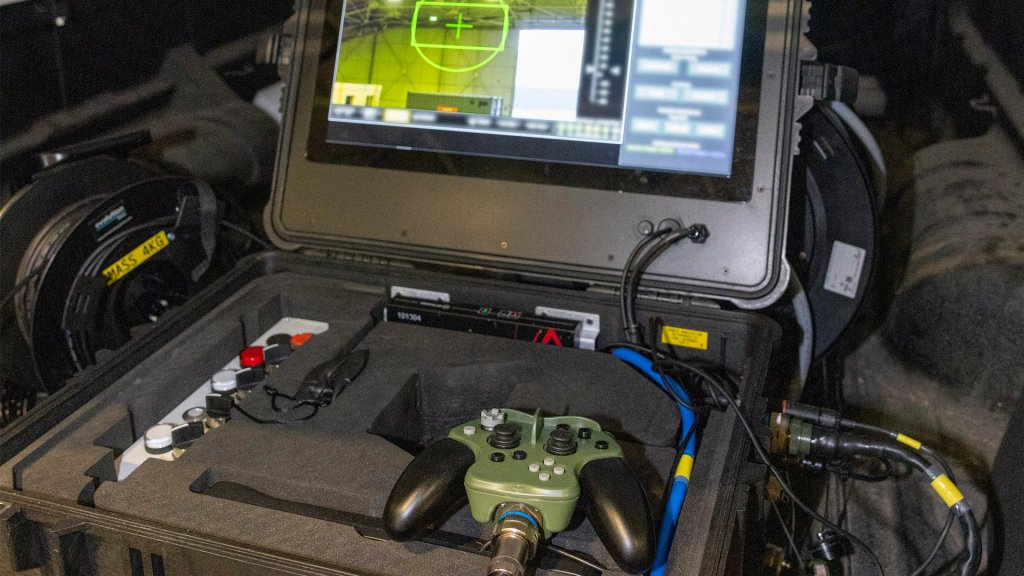
As TWZ has previously written about the R-73, also known to NATO as the AA-11 Archer:
“The R-73, in air-launched form, has a maximum range of 18.6 miles against a head-on target of 8.7 miles against a tail-on target. A ground-launched application would have reduced range since the missile wouldn’t benefit from the speed and altitude parameters of the launch aircraft. In this case, it’s perhaps more relevant to look at the seeker range of the R-73, which would remain broadly the same for ground launch: 6.2-7.5 miles.”
…
“The R-73 is a high-off-boresight (HOBS) weapon, with a seeker that can articulate in any direction much farther than a traditional heat-seeking air-to-air missile with a fixed non-HOBS seeker that stares directly forward. Aided by a helmet-mounted sight, the Archer can be launched in air-to-air engagements against targets with off-boresight angles of +/-75 degrees. This gives the R-73 the potential to be a particularly potent, albeit improvised threat for locking onto and engaging dynamic targets with minimal assisting sensors when used in a surface-launched form.”
R-73’s HOBS seeker looks to be particularly important in this case given that Gravehawk’s launch rails otherwise offer a fixed field of fire.
There is also a clear relationship between Gravehawk and another FrankenSAM the United Kingdom previously supplied to Ukraine that uses the AIM-132 Advanced Short-Range Air-to-Air Missile (ASRAAM) as its interceptor and that was mounted on a 6×6 Supacat High Mobility Transporter (HMT). Both systems notably appear to use similar, if not identical sensor systems.

Though not necessarily as mobile as the Supacat-based system, Gravehawk’s containerized nature does still offer considerable flexibility when it comes to positioning and repositioning it. It also has the benefit of being less obvious as a valuable air defense system while on the move than other types in Ukrainian service.
Gravehawk’s development is said to have been prompted largely by Russian long-range kamikaze drones and cruise missile threats, which could also point more to static employment defending critical infrastructure. The system is also said to be capable of engaging fixed-wing aircraft and helicopters. Bolster Ukraine’s air defenses, in general, has been a key focus of the country’s Western partner for years now. Earlier on in the conflict, there were concerns that the Ukrainian military’s stock of surface-to-air missiles for its existing Soviet-era air defense systems would run dry.
The passive nature of the Gravehawk’s infrared sensors means that it is not vulnerable to detection by Russian electronic warfare systems, unlike surface-to-air missile systems that rely on active radars. That also means they are unlikely to show up in any electronic order of battle of Ukrainian defenses used for route planning for drone and cruise missile attacks.
There is a question of how deep Ukraine’s stocks of R-73s, which also arm its MiG-29 Fulcrum and Su-27 Flanker fighters, might be, but the missiles have already been in growing use in the surface-to-air role. In addition to Gravehawk, Ukraine has already fielded modified 9K33 Osa (NATO designation SA-8 Gecko) wheeled air defense vehicles armed with these missiles instead of their usual 9M33 interceptors. The Ukrainian military also has R-73-armed uncrewed surface vessels (USV). Whether or not Gravehawk could be adapted to fire other missiles like the aforementioned AIM-132 or U.S.-made AIM-9 Sidewinders, which Ukraine has also received for air-to-air and surface-to-air use, is unclear.
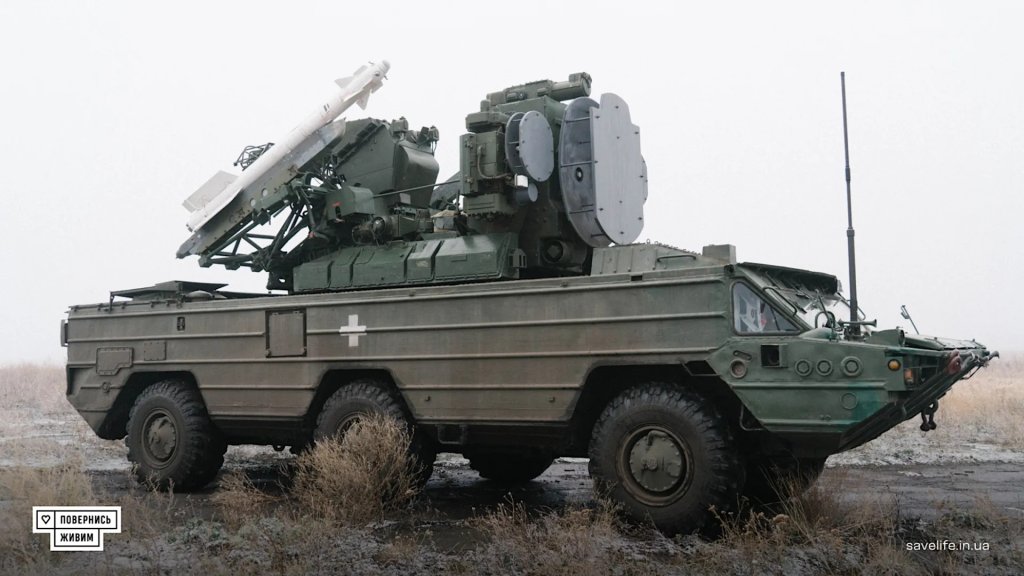
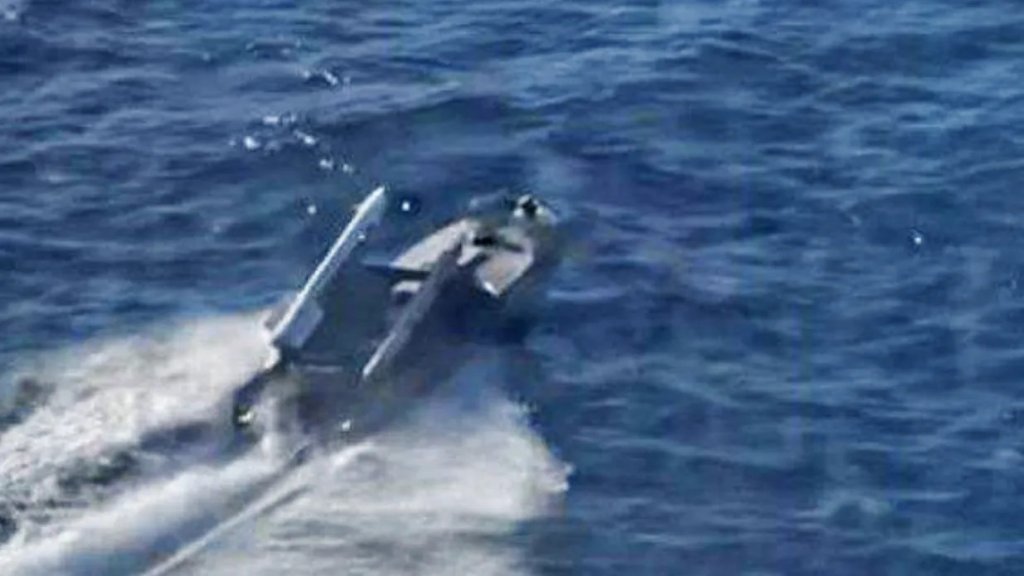
It’s also worth noting here that the conflict in Ukraine is not the first time we’ve seen R-73s and other Soviet-era air-to-air missiles adapted for the air-to-air role. Iranian-backed Houthi militants in Yemen did so years ago.
Interestingly, “the Ukrainians initially didn’t want Gravehawk, instead they wanted more air-to-air missiles and F-16 Fighting Falcons,” according to Forces News. “But having seen it in action they are now apparently sold on it – and want lots more.”
Gravehawk’s emergence does now come amid newly serious questions about the future of foreign military assistance for Ukraine, especially from the United States. President Donald Trump said today that he will start negotiations to end the conflict with Russia’s President Vladimir Putin. At the latest gathering of the multi-national Ukraine Defense Contact Group earlier today, U.S. Secretary of Defense Pete Hegseth also said Ukraine’s desire to regain territory Russia has occupied since 2014 is unrealistic, as are its ambitions for NATO membership.
European partners like the United Kingdom look set to be even more important for Ukraine in the near future. The U.K. Ministry of Defense’s initial disclosure of Gravehawk came as part of an announcement of an additional 4.5 billion pounds ($5.6 billion) in planned military aid for Ukrainian Forces this year.
With Gravehawk already combat-proven, a growing number of them look set to be valuable additions to Ukraine’s air defense arsenal and that will allow the country to make expanded use of R-73 missile stockpiles in the surface-to-air role.
Contact the author: joe@twz.com
